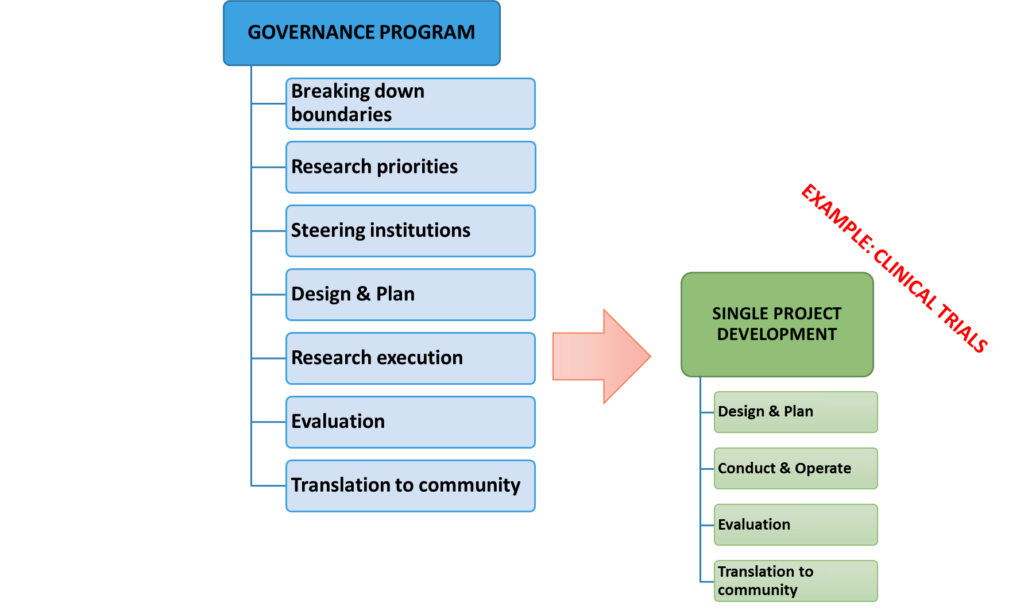Responsible research and innovation – MULTI-ACT’s Patient Engagement Strategy
A central activity in MULTI-ACT is the establishment of a group of experts focused on patient engagement: the Patient Engagement Group (PEG). This PEG has developed guidelines to engage patients in activities throughout the Research & Innovation (R&I) Continuum.
There are many opportunities for patient engagement but so far these have generally focused on medicine lifecycle driven initiatives in which patients have been engaged to improve study design to ensure a trial is acceptable to participants
In order to develop science with patient input MULTI-ACT has identified the sequence of activities in the R&I continuum where patients should be engaged in order to maximize the impact of R&I.
MULTI-ACT has identified 7 steps in the R&I path in which patients can contribute in different forms.

The MULTI-ACT PEG is also developing strategies to mediate, negotiate and build shared perspectives on the development of innovative metrics.
Research outcome measurement is complex, involving different dimensions. This complexity requires to consider the values and the perspectives of different stakeholders, in particular those who can input their immediate and personal insight into research assessment: the patients.
Nowadays reality is that “many PROs were developed with insufficient understanding about what matters to patients and inadequate partnership with patients (as highlighted in the “Patient-Reported Outcomes: Design with the End in Mind” (Milken Institute, Cynthia Grossman, January 2018)
A distinctive characteristic of MULTI-ACT is co-creation. MULTI-ACT has the objective to produce a collective impact framework (CRIF), a methodology to tackle deeply entrenched and complex social problems. Collective Impact is an innovative and structured approach to making collaboration work across government, business, philanthropy, non-profit organizations and citizens to achieve significant and lasting social change. The approach calls for multiple organizations or entities from different sectors to abandon their own agenda in favour of a common agenda, shared measurement and alignment of effort.
In a collective impact framework, the different stakeholders don’t have the goal to see their particular interest reflected in the model but sharing a common vision and agenda.
Unlike collaboration or partnership, Collective Impact initiatives have centralized infrastructure – known as a backbone organization – with dedicated staff whose role is to help participating organizations shift from acting alone to acting in concert.
The CRIF has 5 dimensions: excellence, efficiency, mission and social and the “patient reported dimension” that is considered as a core point of the model.
The central role of patient reported dimension does not signify that patients are more important than other stakeholders but that the whole research process, and the health research impact assessment, has to be done with an active participation of patients.
A key challenge to enable Patient Reported Outcomes (PROs) as key metric to measure impact of research on patients is for MULTI-ACT to help finding a happy medium between PROs that work at population level and PROs that can be individualized for use in care and treatment.
–
This blog entry is a direct continuation of the previous blog, “Responsible research & Innovation – reducing the distance between science and society”. Read it here.


